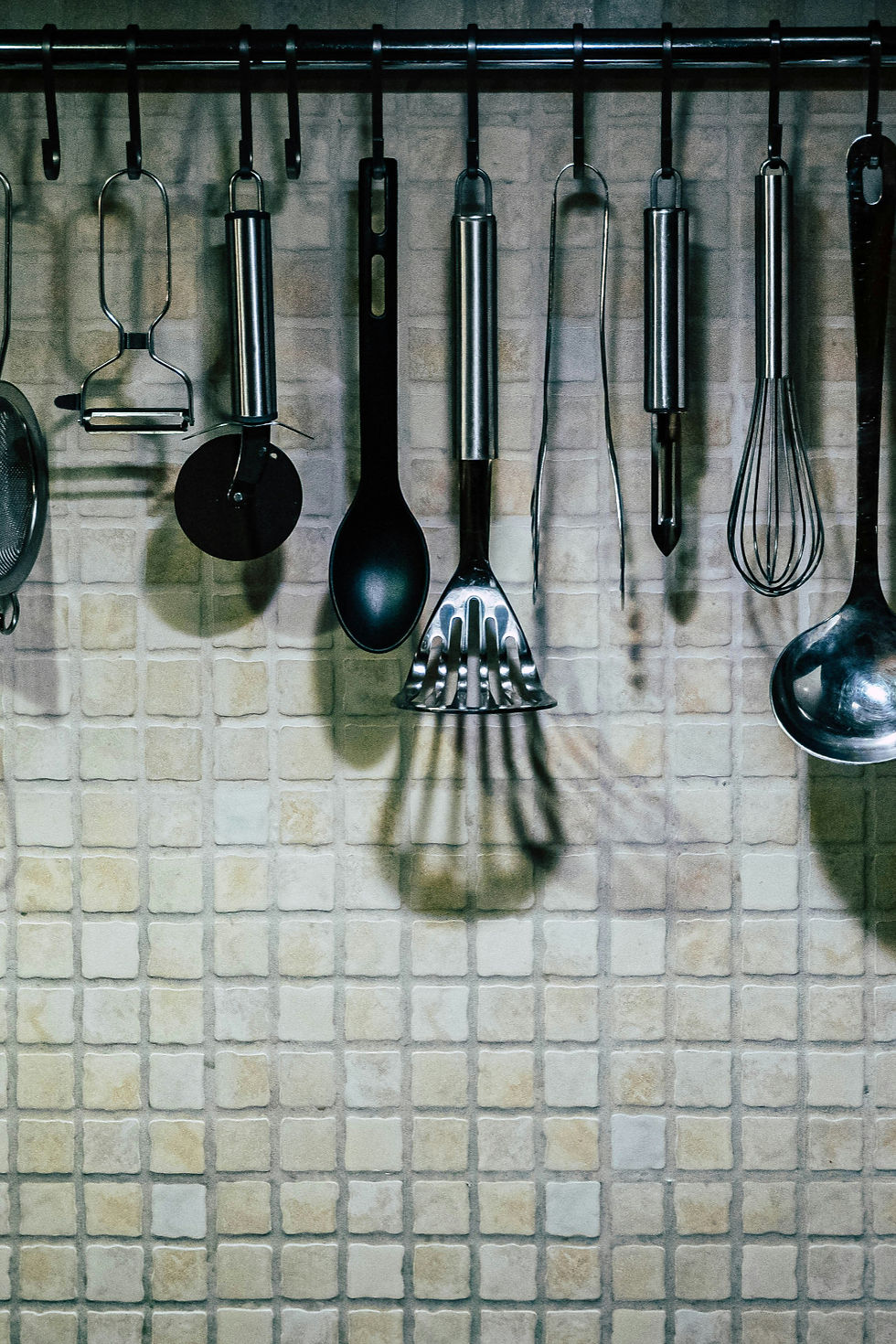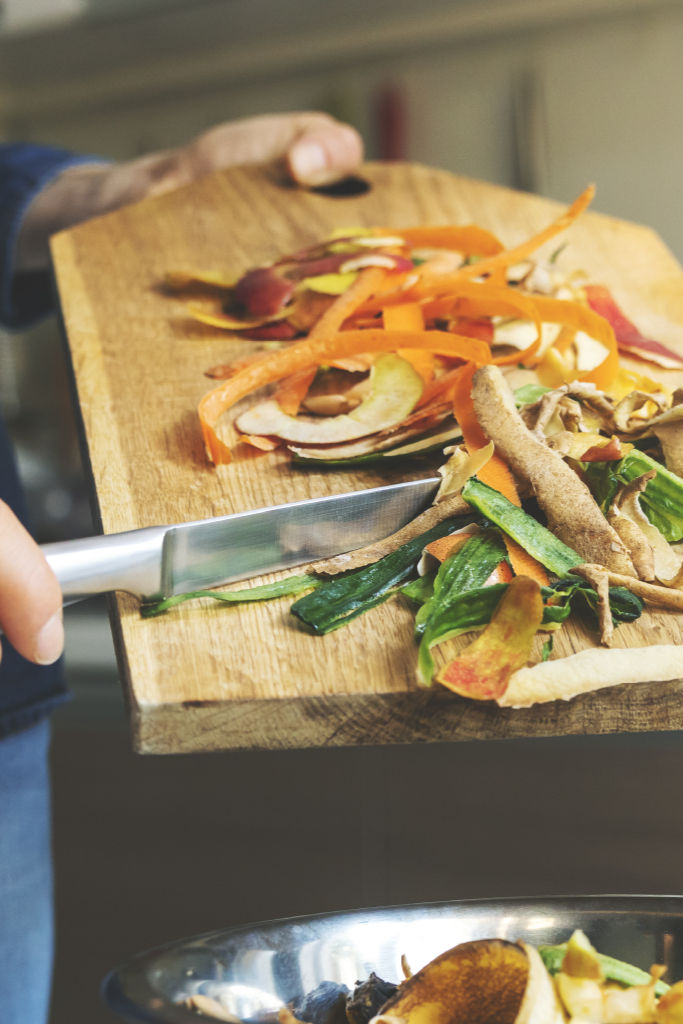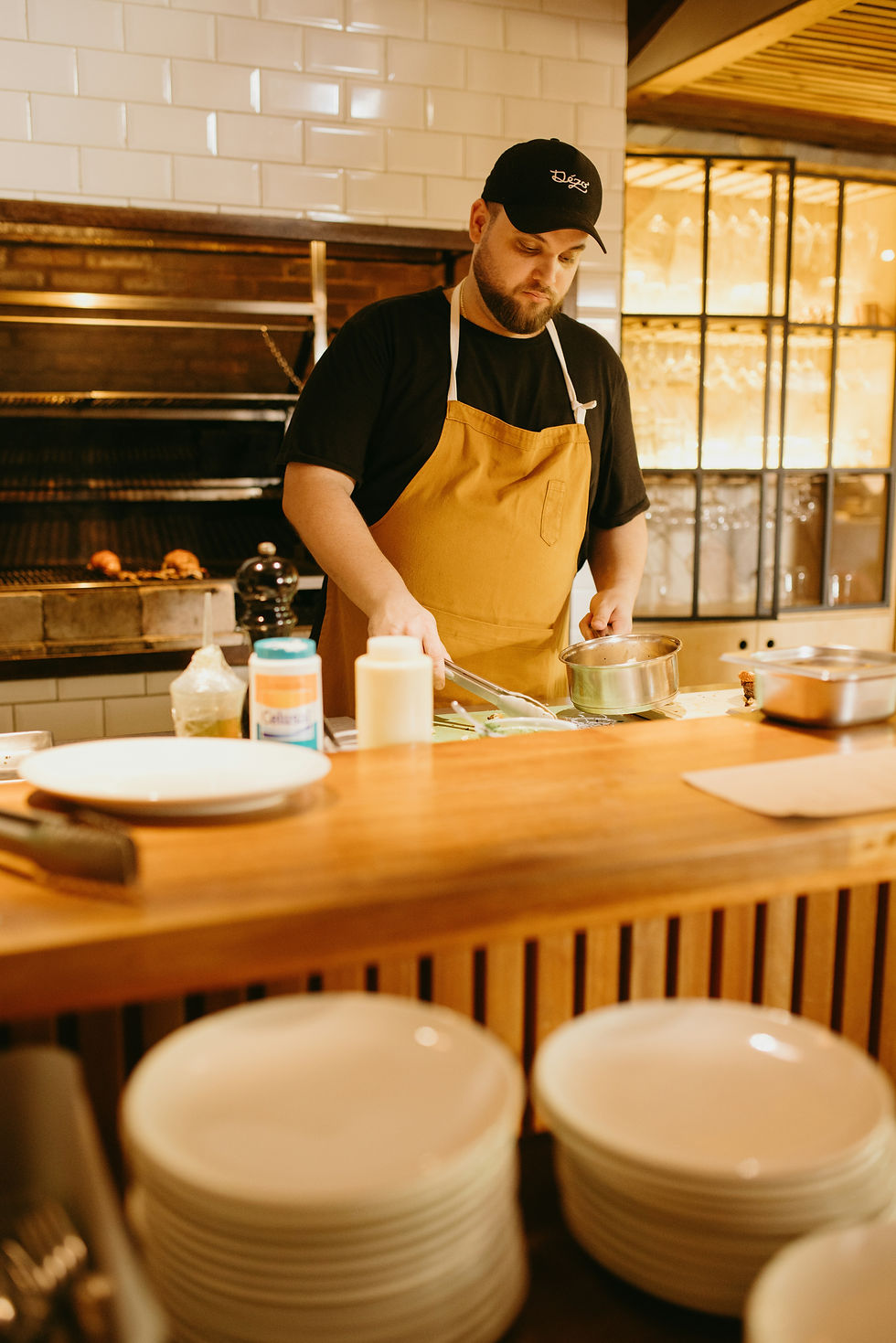7 Ways Private Chefs Cook Cleaner and Faster
- Jay Ocon
- Jul 10
- 3 min read
Updated: Aug 20

Hey there, food lovers! Ever wondered how top private chefs in someone else’s kitchen whip up show-stopping meals without breaking a sweat? Today I’m spilling the beans on seven game-changing tricks—backed by pro research—that make cooking a breeze. Ready to cook like a boss? Let’s dive in!
1. Plan Before You Arrive
Why it matters: No one wants to discover there’s no sheet pan or enough plates at crunch time.
Client check-in: Call ahead and ask about counter space, appliances, dishware, and any quirks (tiny sink, low shelving).
Mental kitchen map: Sketch a quick layout in your head (or on your phone): fridge → prep zone → stove → plating station. Knowing this flow stops you from zig-zagging.
Bring missing tools: If the kitchen lacks something—mixing bowls, zesters, heatproof spatulas—pack them in your chef kit bag.

2. Heavy-Duty Mise en Place

Why it matters: Having everything ready is like loading ammo before battle.
Pre-portion & label: Use small bowls or ramekins for chopped veggies, spices, and garnishes. Masking-tape labels (“herb mix,” “onion dice”) eliminate guesswork.
Bulk-prep at home: Par-cook starches, blend sauces, or marinate proteins earlier—just keep them cold and clearly dated.
Tray your courses: Keep each course’s ingredients on its own sheet pan or tray. When it’s time, you grab the tray and get cooking.
3. Always Pack Your Personal Tool Kit
Why it matters: Dull or missing tools cost time and can be dangerous.
Must-haves: Sharp chef’s knife, paring knife, peeler, tongs, silicone spatula, instant-read thermometer, microplane, squeeze bottles for sauces.
Assistant hack: Bring a small pouch with extra zip-lock bags, rubber bands, and kitchen twine. You’ll thank yourself for that last-minute herb bundle.

4. Build a “Tight” Work Zone (Mind-Blowing Efficiency)

Why it matters: The less you move, the faster you finish.
Arm’s-reach setup: Tools on one side, ingredients on the other. For right-handers, knives and spoons on the right, trim scraps on the left.
Anti-slip hack: Place a damp towel under your cutting board—no more wobbly chopping.
Vertical tricks: Use stove covers or a large board over a cool burner to extend counter space. Hang spoons on cabinet hooks if available.
5. Scrap Bowl + Landing Zone
Why it matters: Clutter kills speed—keep your board clear!
Trash bowl: A small bowl next to you to catch peels, stems, and scraps—zero trips to the bin.
Landing bowl/tray: Slide your diced ingredients off the board into a separate container. Your board’s instantly ready for the next task.
Heatproof container: Use a metal bowl that you can toss right into a hot pan when it’s time to cook.

6. Dedicated Raw Prep Station

Why it matters: Keeps your main station clean and food-safe.
Contain the mess: Line a rimmed sheet pan with parchment under your raw proteins to catch drips. Keep gloves, paper towels, and sanitizer at hand.
Sanitize & switch: After raw work, wipe down that mini-station before touching veggies or garnishes. Never cross-contaminate.
7. Clean as You Go—and Stay Calm
Why it matters: A tidy space equals a tidy mind.
Immediate wipe: Keep a damp rag or kitchen wipe in your back pocket. Wipe boards, counters, and spoons between steps.
Dish bin hack: If you’re solo, designate a bucket for dirty tools. When it’s full, wash or stow it out of the way to reclaim space.
Mental flow: Chefs say that order in your station leads to confidence in your cooking. A clear counter keeps you in the zone, not chasing mess.

8. (Bonus) Guest-Friendly Setup

Why it matters: Private dinners aren’t just about food—they’re an experience.
Work behind the scenes: Position your station so you’re not blocking guests’ view or foot traffic. If possible, set up on an island or portable table out of prime mingle space.
Silent service: Use silicone mats under bowls to prevent clattering. Whisper tips to assistants or use hand signals to minimize noise.
9. Plating Station: Your Victory Lap
Why it matters: The final flourish deserves a clean stage.
Pre-set the area: Wipe one clean counter solely for plating. Warm plates in a low oven (or chill for desserts) before service.
Assembly-line plating: Line up all plates, then add proteins to each, followed by sauces, sides, and garnishes. This ensures hot, consistent dishes roll out fast.
Last-second polish: Keep a small towel for wiping plate rims and tweezers for precise herb placement.

Stick to Your Setup
Repeating the same station layout every time builds muscle memory. After a few gigs, your hands will move faster than your brain can think!
With these nine powerhouse tips—from mental kitchen mapping to plating like a pro—you’ll handle any private-home kitchen like a seasoned chef. Try them at your next gig, and watch your prep, cooking, and plating flow flawlessly. Happy cooking!
Ready to turn your passion into unforgettable private dining experiences? Apply now to join our team of elite private chefs!





Comments